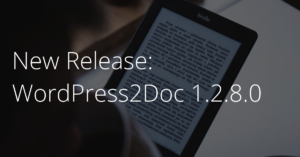Basics: Secure password hashing with salts
 Anyone who develops software and especially if he/she does so in the web environment, has certainly already written one or the other login system or at least had points of contact in this area. Besides the logic of a secure login or user management system, the secure storage of passwords is one of the most important points during implementation.
Anyone who develops software and especially if he/she does so in the web environment, has certainly already written one or the other login system or at least had points of contact in this area. Besides the logic of a secure login or user management system, the secure storage of passwords is one of the most important points during implementation.
Even if the actual login code is 100 percent error-free and secure (which should never be assumed in practice), security vulnerabilities in the server software can still lead to intrusions or hacks. There is always a variable that is out of one’s control and thus websites are hacked, compromised and complete databases with usernames and passwords are read every day.
In order to protect users in the best possible way in the event of such a hack, […]

 Round about 8 months ago, I release the last WordPress2Doc update. Some may have thought that the project has fallen asleep. But that is not the case.
Round about 8 months ago, I release the last WordPress2Doc update. Some may have thought that the project has fallen asleep. But that is not the case. Today there is again a software update. Since yesterday evening the new version 1.2.7.0 of the WordPress2Doc Tool is available for download. In addition to two bugfixes, further translations have been introduced. Thanks a lot to the community support!
Today there is again a software update. Since yesterday evening the new version 1.2.7.0 of the WordPress2Doc Tool is available for download. In addition to two bugfixes, further translations have been introduced. Thanks a lot to the community support! In the following article, there is a short Java snippet that can be used to read the operating system of the computer running the Java program.
In the following article, there is a short Java snippet that can be used to read the operating system of the computer running the Java program.